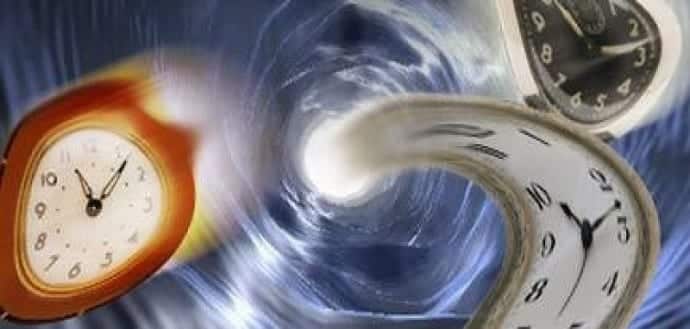Scientists Say Time Could Move Backwards In A Parallel Universe
All of us experience time that appears to move in one direction – forward – we age, we have memories from the past but we have no idea what will happen in the future. The concept is defined as the “arrow of time,” which is used to indicate that time is asymmetric – even though most laws of the universe are perfectly symmetric. However, nothing in the laws of physics insists that time must move forward.
Is it possible that there exists a place where time actually moves backwards? In theory, yes, in what are called mirror universes where time moves in the opposite direction: it moves backward, and not forward.
A potential explanation for this has been put forward by physicist Sean Carroll from the California Institute of Technology (CalTech) and cosmologist Alan Guth from the Massachusetts Institute of Technology (MIT).
The physicists suggest that if we were looking at the mirror universe, we would see time moving from the future to the past, but from the perspective of that universe, it would look like our time was moving backwards, and not forward.
They have developed a way to show the spontaneous appearance of the arrows of time, and how they can flow in opposite directions using entropy as the basis for their model.
In an interview with New Scientist, Caroll and Guth explain that, in the laws of physics, the direction in which time flows does not matter.
By this explanation, time which runs backwards would still go in accordance with the laws.
While humans have grown used to the idea that events lead to other events in a particular order, Carroll says this is not the case.
‘There’s no such thing, at a very deep level, that causes [must] precede effects,’ Carroll told New Scientist.
Many physicists have settled on entropy, the level of molecular disorder in a system, which constantly increases. The arrow of time comes from observing that time does indeed seem to pass for us and that the direction of time is consistent with the increase in entropy in the universe.
This means that ‘the future is the direction of time in which entropy increases’ on a universal scale, writes New Scientist.
However, two separate groups of physicists are working on models that look at how the initial conditions, such as the Big Bang, might have created the arrow of time, and strangely, both show time moving in two different directions.
When the Big Bang created our universe, it may have also created a mirror universe where time moves in the opposite direction. So time in this parallel universe moves backwards from our perspective. However, anyone in the parallel universe would see our universe’s time as moving backwards.
The researchers developed a model in which they dropped a fixed number of particles, each with a randomly assigned velocity, into an infinite universe. Eventually, they said, arrows of time that flowed in a specific direction spontaneously developed. Half of the particles spread outward toward the edges of the cloud increasing entropy, while the other half of the particles moved towards the center of the edges, decreasing it.
Once the particles passed through the center, they continued on towards the edges, a concept the study authors refer to as the “two-headed arrow of time.” In short, if an arrow of time emerges in one direction, the same will happen in the opposite direction, irrespective of its starting point. They claim the model reveals that all particles eventually move outward, that entropy grows without limit and that ‘time zero,’ would be the point of lowest entropy. This means that the direction of the individual arrows has no importance, because the cloud will always expand.
“The point that Alan and I are trying to make, is that it’s very natural in those circumstances that almost everywhere in the universe you get a noticeable arrow of time. Then of course, you do the work of making it realistic, making it look like our universe,” Carroll told New Scientist. While the model has yet to be published, he pointed out that it could be applicable to the multiverse.

